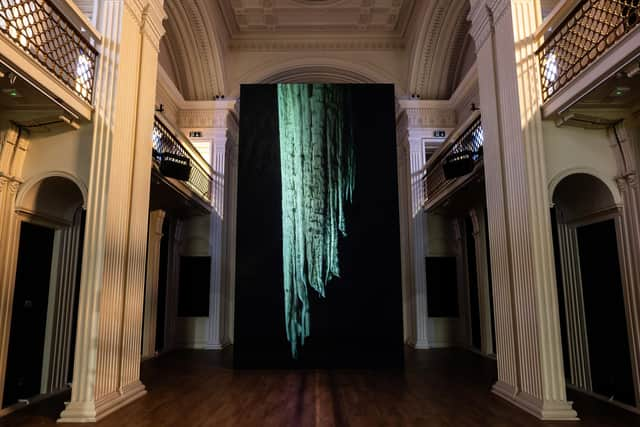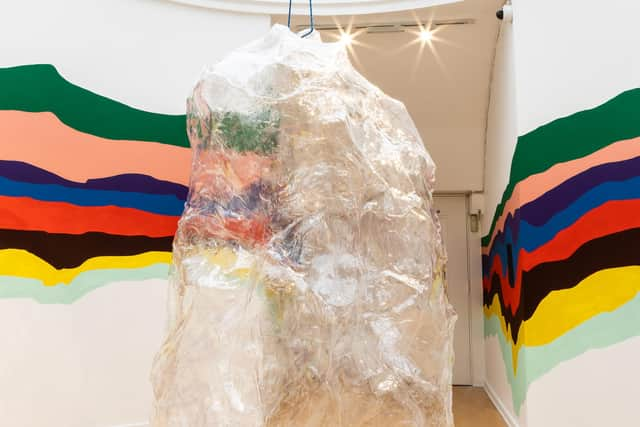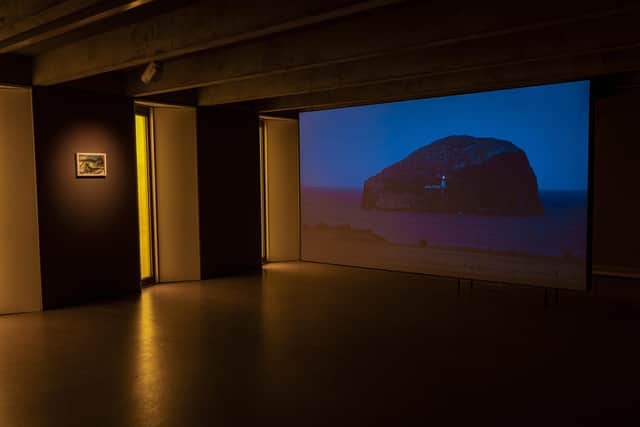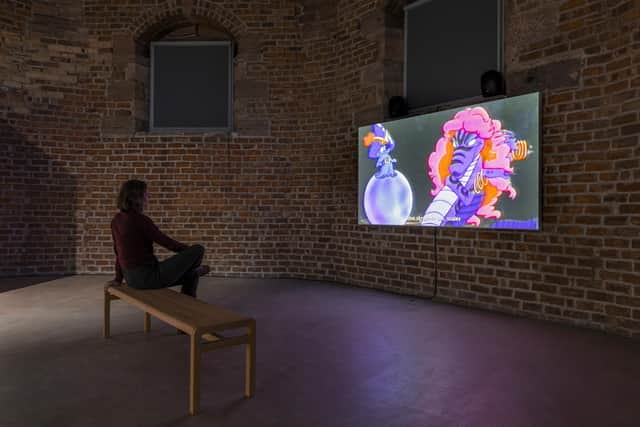Art reviews: The Recent | Liza Sylvestre | Thomas Abercromby
The Recent, Talbot Rice Gallery, Edinburgh ****
Liza Sylvestre: asweetpea, Collective, Edinburgh ***
Thomas Abercromby: John, Collective, Edinburgh ****


Deep time is a juicy concept for artists to get their teeth into, but a challenging one to depict in a visual medium, far less fit into the heads of an audience with short attention spans. The strongest work in The Recent at Talbot Rice Gallery pulls this off, saying something powerful about what is immeasurably big without reducing its significance.
The Recent takes as its starting point the work of 19th-century geologist Charles Lyell and is linked to the Deep Time festival of music at the Fruitmarket and a Lyell exhibition at University’s Centre for Research. There is a small display of his notebooks and samples here, but it is chiefly a jumping off point for the work of 11 international contemporary artists.
Advertisement
Hide AdIt’s an ambitious proposition, but curator Tessa Giblin has wisely homed in on an aspect of Lyell’s thinking which is self-contained enough to bring a degree of focus and big enough to allow artists to move off in many directions. Lyell was, the show contends, one of the first to observe the human impact on the earth’s geological processes, which feels powerfully prescient now, in the anthropocene.
Angelica Mesiti, who had a solo show at Talbot Rice last year, links most directly to Lyell with her photographic prints of fossilised raindrops (some of his raindrop fossils are displayed upstairs). The very fact that something as transitory as rain can be fossilised is marvellous enough, but Mesiti extends the idea with an eight-minute film in which of a group of young people simulate the sound of a rainstorm with fingerclicks, taps and claps. It is almost the opposite of a fossil, living and dynamic and ephemeral, and yet it timeless, too, a game passed down through millennia.


Scottish artist Katie Paterson is a master at dealing with subjects on this scale, drawing on complex scientific data but somehow making it graspable on a human level. She presents an embroidery of extinct plants and two types of bespoke incense, in which perfumers have recreated the smell of the world’s first forest (believed to be on the site of modern day Cairo), and today’s Amazon rainforest, which might be its last. The incense is burned at 3pm on days on which wildfires are burning anywhere in the world (seven were recorded on the day I visited).
Simon Starling’s billboard Autoxylopyrocycloboros, three images which show him feeding the engine of his single-cylinder steamboat with the wood of the boat itself, feels like the only metaphor we will ever need about the climate crisis, while Nicholas Mangan explodes a piece of zircon – apparently the oldest mineral on the planet – at 2,500 frames per second, so it looks like a sky full of stars.
Irish artist Dorothy Cross plays us the voice of a boy chorister on the cusp of adolescence next to a monumental film of the Great Stalactite, one of the biggest and oldest in the world. The juxtaposition of the haunting, wordless, timeless voice and the almighty, ancient piece of geology speaks to the scale of our own transitory lives next to the concept of deep time.
Helen Cammock’s text work – full title: If you take everything you like just because you like it, just because you want it the ghosts will have no place to play and the children no place to rest – was made for a project in New Orleans but resonates strongly here. A large group of drawings by Regina de Miguel, made from a place of “climate anxiety”, are inventive and strange, combining votive and mythological imagery with human organs, plans, islands and coral reefs.
Advertisement
Hide Ad

For The Magic Mountain, Micol Roubini filmed at a giant disused asbestos mine in Balangero, Italy: while scientists take rock samples in protective clothing, ordinary people from the area talk about how the place haunts their dreams. The video work, over five screens, could be more focussed, but does form a nuanced picture, a place of danger but also beauty, and even, potentially, scientific progress.
Not all of the work has equal impact. Elgé Budvytyté’s film, Songs from the Compost: Mutating Bodies, which features a group of young dancers exploring the Curonian Spit, the coastal dunes between Lithuania and Russia, feels like a cumbersome metaphor for the interdependence of growth and decomposition. Otobong Nkanga’s tapestry, while beautiful, seems to be making a fairly obvious point about the deep oceans. However, with the best work really packing a punch, Giblin’s ambitious curation has notched up another triumph.
Advertisement
Hide AdMeanwhile, at Collective, two film-based shows focus on elements of family. In the City Dome, American artist Liza Sylvestre presents a remake of a 1980s cartoon she loved as a child, Sweet Sea, developed with the help of her six-year-old child. Cutting and pasting parts of the story focussing on the six-year-old’s careful step-by-step narration, sometimes dissolving into blurred colours, sometimes losing sound altogether, this is a work about communication, springing from the fact that Sylvestre is deaf and her child hearing. Three large-scale layered drawings accompany it.
The remade cartoon is clearly the product of successful communication between parent and child, so it would have helped to hear more of their interaction in the main presentation (there is a captioned audio version in the Collective’s library which offers a different perspective). Watching your favourite childhood cartoon with your own child feels intimate, loaded with personal significance, so much so that it feels odd to be watching it on a big screen. The significance of the work for a wider audience did not emerge as clearly as the sense of the meaning it holds for the people involved.


Thomas Abercromby’s 30-minute film, John, being shown in the Hillside space as part of Collective’s Satellites programme, is dedicated to the memory of his late father. The starting point is a handful of paintings made by his father as a child, and Abercromby’s attempts to find out more about them. Gradually, the scope widens into a thoughtful reflection on working-class identity and so-called high culture.
Sound and visuals are used carefully: we hear (but do not see) Abercromby discussing the paintings with his aunt. We see Jodie, John’s great-niece, in her dance class, and some beautiful footage made in and around the North Glasgow housing schemes where the family lives.
There is some off-screen chat between the cast and crew who, we’re told, are all from working-class backgrounds. At one point, two local children crash the shoot, saying they “wanna be in a fillum”. Then, we see two adult dancers performing, both in the housing scheme, and in the National Gallery of Scotland, expressing themselves beautifully (but wordlessly) in a building dedicated to rarefied high culture.
The person of John begins to emerge, obliquely. The film asks questions, without being either ponderous or reductive: what does it mean to have access to the arts, to fulfil one’s creative potential? What does it mean for one of John’s paintings to be hanging, now, in Collective? There is not enough working-class experience reflected in contemporary art, and this self-aware, thoughtful piece of work feels both fresh and important.
The Recent until 17 February; Liza Sylvestre and Thomas Abercromby until 23 December